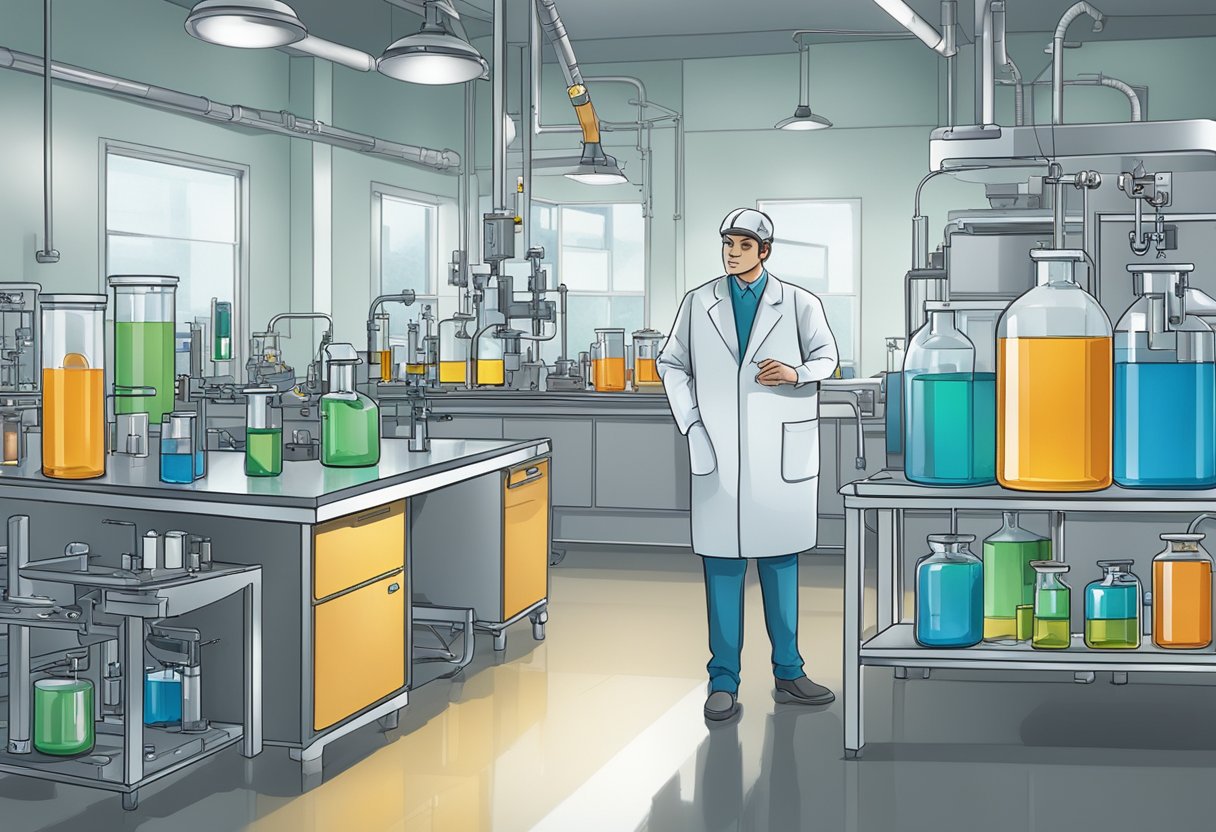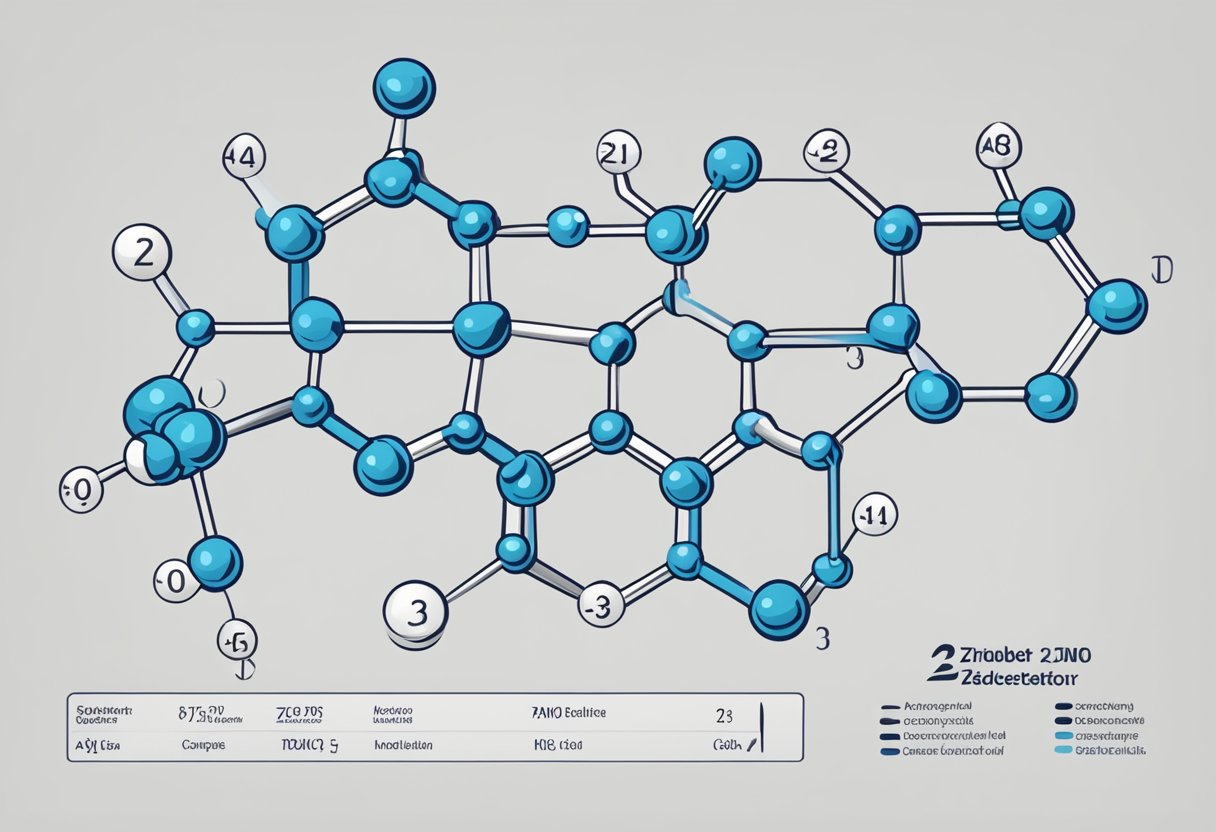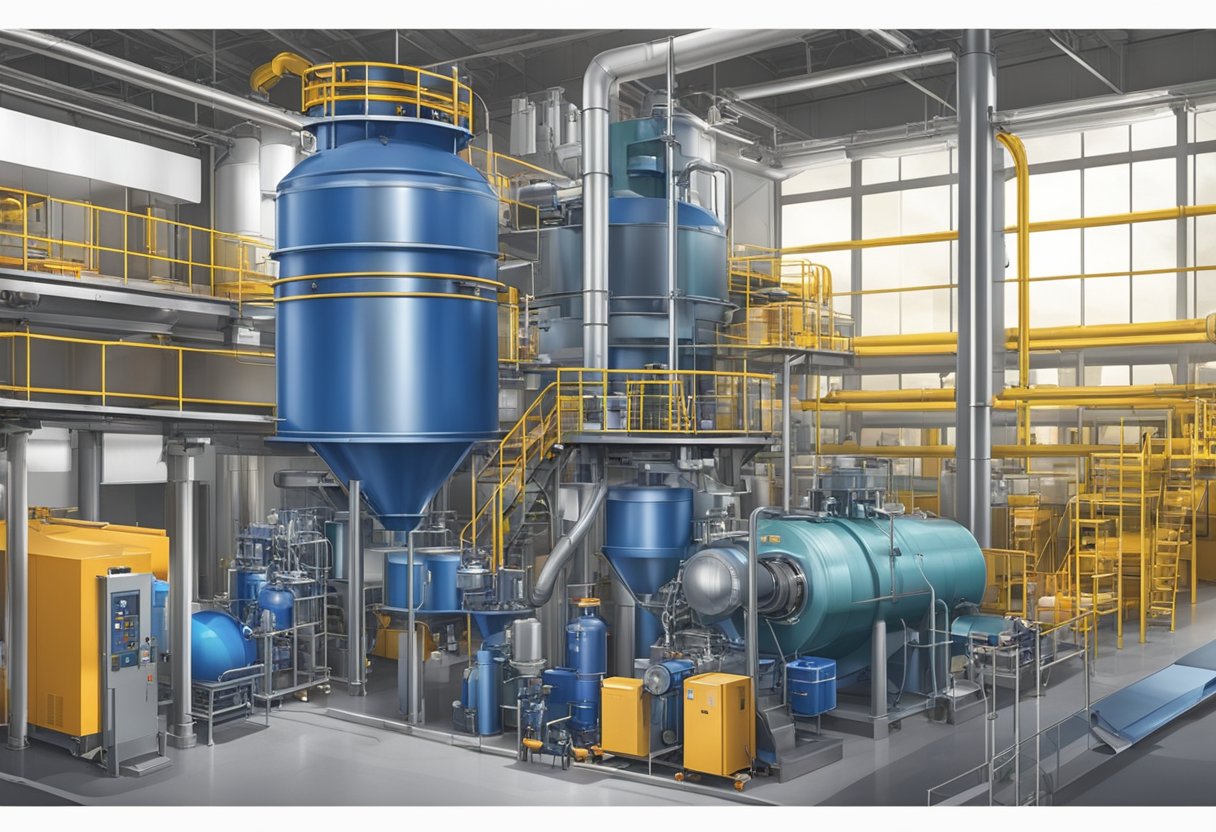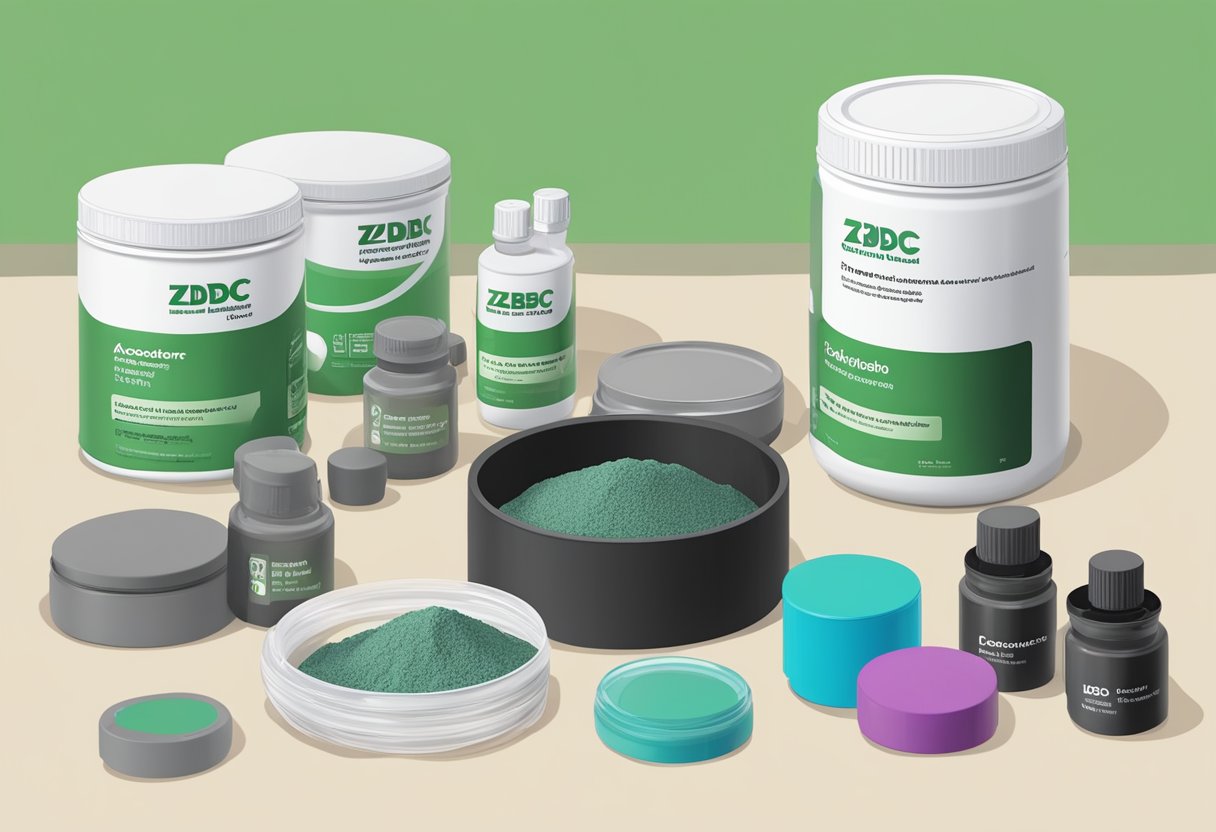ZDBC Rubber Accelerator: Properties, Applications, and Benefits
19/01/2024
ZDBC rubber accelerator is a chemical compound used in the production of rubber products. It is a white powder that is soluble in water and has a melting point of 240°C. The chemical formula for ZDBC is C18H36N2S4Zn, and its molecular weight is 474.15 g/mol.

ZDBC is commonly used in the production of tires, rubber hoses, and other rubber products. It acts as a vulcanizing agent, which means it helps to cross-link the polymer chains in the rubber and make it more durable. ZDBC is also used as a stabilizer to prevent the rubber from breaking down over time due to heat, light, or other environmental factors.
Overall, ZDBC rubber accelerator plays a critical role in the production of high-quality rubber products. Its unique properties make it an essential ingredient in many rubber formulations, and its effectiveness has been proven over many years of use in the industry.
Chemical Structure of ZDBC

ZDBC, also known as zinc dibutyl dithiocarbamate, is a rubber accelerator that belongs to the family of dithiocarbamates. The chemical formula of ZDBC is C18H36N2S4Zn and its molecular weight is 474.14 g/mol.
The structure of ZDBC consists of a zinc ion (Zn2+) coordinated to two butyl groups (C4H9) and two dithiocarbamate groups (-N-CS2-) in a tetrahedral geometry. The dithiocarbamate groups are responsible for the acceleration of rubber vulcanization by reacting with sulfur to form crosslinks between polymer chains.
The chemical structure of ZDBC can be represented as:
ZDBC is a white to yellowish powder that is soluble in chloroform, benzene, and carbon disulfide. It is commonly used as a secondary accelerator in the production of natural and synthetic rubbers, particularly in the manufacturing of tires, conveyor belts, and other rubber products.
Overall, the chemical structure of ZDBC plays a crucial role in its function as a rubber accelerator, and its properties make it a valuable component in the rubber industry.
Production Process of ZDBC

ZDBC is a widely used rubber accelerator that is produced through a multi-step process. The production process of ZDBC involves the following steps:
- Synthesis of 2-mercaptobenzothiazole (MBT): The first step in the production of ZDBC is the synthesis of MBT. MBT is synthesized by reacting aniline and carbon disulfide in the presence of sulfuric acid. The resulting MBT is then purified and dried.
- Synthesis of zinc dimethyldithiocarbamate (ZDMC): In the next step, ZDMC is synthesized by reacting MBT with sodium hydroxide and dimethylamine. The resulting ZDMC is then purified and dried.
- Synthesis of ZDBC: ZDBC is synthesized by reacting ZDMC with zinc oxide in the presence of sulfuric acid. The resulting ZDBC is then purified and dried.
The purity and quality of ZDBC can be improved by optimizing the reaction conditions and using high-quality raw materials. The production process of ZDBC is carefully monitored to ensure that the final product meets the required specifications and standards.
In summary, the production process of ZDBC involves the synthesis of MBT, ZDMC, and ZDBC through a series of chemical reactions. The quality of the final product depends on the quality of the raw materials and the optimization of the reaction conditions.
Properties of ZDBC Rubber Accelerator

ZDBC is a white powder that is soluble in chloroform, benzene, and carbon disulfide. It is insoluble in water and ethanol. The chemical name of ZDBC is Zinc dibutyl dithiocarbamate. It is a widely used accelerator in the rubber industry due to its excellent performance, low toxicity, and low pollution.
ZDBC rubber accelerator has a molecular formula of C18H36N2S4Zn and a molecular weight of 474.14 g/mol. It has a melting point of 123-125°C and a density of 1.24 g/cm3.
ZDBC is a fast curing accelerator that can be used alone or in combination with other accelerators. It has a high degree of cross-linking and improves the physical and mechanical properties of rubber products. ZDBC can be used in the production of tires, belts, hoses, and other rubber products.
ZDBC is stable under normal storage conditions and has a shelf life of two years. However, it should be stored in a cool, dry place away from sunlight, heat, and moisture. Exposure to these conditions can cause ZDBC to decompose and lose its effectiveness.
In summary, ZDBC rubber accelerator is a widely used accelerator in the rubber industry due to its excellent performance, low toxicity, and low pollution. Its fast curing properties and ability to improve the physical and mechanical properties of rubber products make it a popular choice for tire, belt, and hose production.
Applications in Rubber Manufacturing
ZDBC rubber accelerator is widely used in the rubber manufacturing industry due to its excellent performance and unique properties. It is a highly efficient accelerator that can be used alone or in combination with other accelerators to improve the vulcanization process of rubber products.
One of the primary applications of ZDBC in rubber manufacturing is in the production of tires. It is added to the rubber compound to improve the curing rate, reduce the curing time, and enhance the mechanical properties of the tire. ZDBC also helps to improve the heat resistance and aging resistance of the tire, resulting in a longer service life.
ZDBC is also used in the production of various rubber products, including hoses, belts, seals, and gaskets. It is added to the rubber compound to improve the processing properties, such as the flowability and mold release, and to enhance the mechanical properties, such as the tensile strength and elongation at break.
In addition, ZDBC is used in the production of rubber gloves, footwear, and other rubber products that require high elasticity and flexibility. It helps to improve the tear strength and abrasion resistance of the rubber, resulting in a more durable and long-lasting product.
Overall, ZDBC rubber accelerator is a versatile and effective additive that can enhance the performance and properties of various rubber products. Its unique properties make it an essential component in the rubber manufacturing industry.
Effectiveness as an Accelerator
ZDBC rubber accelerator is an effective and widely used accelerator in the rubber industry. It is known for its ability to increase the rate of vulcanization, shorten the curing time, and improve the physical properties of rubber products.
The effectiveness of ZDBC as an accelerator is attributed to its unique chemical structure. It contains a sulfur atom that can react with the rubber molecule to form crosslinks, which are essential for the formation of a three-dimensional network structure. This network structure improves the strength, elasticity, and durability of rubber products.
In addition to its crosslinking ability, ZDBC also has a high solubility in rubber compounds, which allows it to disperse evenly throughout the rubber matrix. This even dispersion ensures that the accelerator can react with all the rubber molecules, leading to a more uniform and complete vulcanization.
Furthermore, ZDBC has a relatively low activation temperature, which means that it can start the vulcanization process at lower temperatures than other accelerators. This property is particularly important in the production of heat-sensitive rubber products, where high temperatures can cause degradation and loss of physical properties.
Overall, ZDBC rubber accelerator is a highly effective accelerator that can significantly improve the performance of rubber products. Its unique chemical structure, high solubility, and low activation temperature make it a popular choice among rubber manufacturers.
Comparison with Other Rubber Accelerators
When it comes to rubber accelerators, there are several options available in the market. In this section, we will compare ZDBC rubber accelerator with other commonly used accelerators.
ZDBC vs. CBS
CBS, also known as N-cyclohexyl-2-benzothiazole sulfenamide, is a widely used rubber accelerator. While both ZDBC and CBS are sulfenamide accelerators, ZDBC has several advantages over CBS. Firstly, ZDBC has a higher decomposition temperature, which means it is more stable at higher temperatures. Secondly, ZDBC has a lower toxicity compared to CBS, making it a safer option for workers handling rubber compounds.
ZDBC vs. TMTD
TMTD, also known as tetramethylthiuram disulfide, is another commonly used rubber accelerator. While both ZDBC and TMTD are disulfide accelerators, ZDBC has several advantages over TMTD. Firstly, ZDBC has a lower tendency to scorch, which means it is less likely to cause premature vulcanization. Secondly, ZDBC has a lower curing time compared to TMTD, which can lead to increased productivity.
ZDBC vs. MBTS
MBTS, also known as 2,2′-dibenzothiazyl disulfide, is another popular rubber accelerator. While both ZDBC and MBTS are disulfide accelerators, ZDBC has several advantages over MBTS. Firstly, ZDBC has a lower tendency to cause blooming, which can lead to surface defects in the finished product. Secondly, ZDBC has a lower curing time compared to MBTS, which can lead to increased productivity.
In conclusion, while there are several rubber accelerators available in the market, ZDBC has several advantages over commonly used accelerators such as CBS, TMTD, and MBTS. Its higher stability, lower toxicity, lower tendency to scorch and bloom, and shorter curing time make it a reliable and efficient option for rubber manufacturers.
Toxicology and Safety Measures
ZDBC rubber accelerator is a safe and effective product when used appropriately. However, like all chemicals, it can pose potential health hazards if not handled properly. The following section outlines the toxicology and safety measures associated with ZDBC rubber accelerator.
Toxicology
ZDBC rubber accelerator is not classified as a carcinogen, mutagen, or reproductive toxin. However, it can cause skin and eye irritation if it comes in contact with these areas. Inhalation of the product can also cause respiratory irritation.
Studies have shown that ZDBC rubber accelerator has a low acute toxicity. The lethal dose for rats is greater than 5,000 mg/kg of body weight. In addition, the product has a low potential for bioaccumulation.
Safety Measures
It is important to follow appropriate safety measures when handling ZDBC rubber accelerator. This includes wearing appropriate personal protective equipment such as gloves, goggles, and a respirator if necessary. In addition, the product should be stored in a cool, dry, and well-ventilated area away from incompatible materials.
If skin or eye contact occurs, the affected area should be flushed with water for at least 15 minutes. If inhalation occurs, the affected person should be moved to an area with fresh air. In case of ingestion, the person should seek medical attention immediately.
Overall, ZDBC rubber accelerator is a safe and effective product when used appropriately and with appropriate safety measures in place.
Environmental Impact of ZDBC
ZDBC is a rubber accelerator commonly used in the production of tires, footwear, and other rubber products. While it is an effective accelerator, it can have negative environmental impacts if not handled properly.
One of the main concerns with ZDBC is its potential to leach into soil and water. This can occur during production, use, and disposal of rubber products containing ZDBC. Once in the environment, ZDBC can persist for years and potentially harm aquatic and terrestrial organisms.
To mitigate the environmental impact of ZDBC, manufacturers and users can take several steps. For example, they can use closed systems during production to minimize the release of ZDBC into the environment. Additionally, they can properly dispose of rubber products containing ZDBC by sending them to specialized facilities that can handle them safely.
It is also important to note that ZDBC is not classified as a persistent organic pollutant (POP) by the Stockholm Convention. This means that while it can have negative impacts, it is not considered to be a major environmental threat.
Overall, while ZDBC can have negative environmental impacts if not handled properly, there are steps that can be taken to minimize these impacts. Manufacturers and users of rubber products containing ZDBC should take care to handle and dispose of them in a responsible manner.
Regulatory Aspects
ZDBC rubber accelerator is regulated by various government agencies to ensure that it is safe for use in various applications. The following are some of the regulations that apply to ZDBC:
- Registration, Evaluation, Authorization, and Restriction of Chemicals (REACH): ZDBC is listed on the REACH Candidate List of substances of very high concern (SVHCs). This means that companies that produce or import ZDBC in the EU must comply with certain requirements, such as notifying the European Chemicals Agency (ECHA) if they exceed certain thresholds.
- Occupational Safety and Health Administration (OSHA): OSHA has set a permissible exposure limit (PEL) of 5 mg/m3 for ZDBC in workplace air. Employers must ensure that their workers are not exposed to levels above this limit.
- Environmental Protection Agency (EPA): The EPA regulates the use of ZDBC in the United States under the Toxic Substances Control Act (TSCA). ZDBC is not currently listed as a chemical of concern under TSCA, but it is subject to certain reporting requirements.
- International Agency for Research on Cancer (IARC): The IARC has classified ZDBC as Group 2B, which means that it is possibly carcinogenic to humans. However, this classification is based on limited evidence and does not necessarily mean that ZDBC is harmful at typical exposure levels.
Overall, the regulatory landscape for ZDBC is complex and varies depending on the specific application and jurisdiction. Companies that use ZDBC should be aware of the relevant regulations and take steps to ensure compliance.
Storage and Handling Guidelines
ZDBC rubber accelerator is a highly reactive chemical that requires proper storage and handling to ensure safety and efficacy. Here are some guidelines to follow:
- Store ZDBC in a cool, dry, and well-ventilated area away from sources of heat, flame, and ignition. Keep containers tightly closed and labeled with the appropriate hazard warning.
- Avoid exposure to direct sunlight, moisture, and incompatible materials such as acids, alkalis, and oxidizing agents. Do not store ZDBC near food, beverages, or pharmaceuticals.
- Use appropriate personal protective equipment (PPE) when handling ZDBC, including gloves, goggles, and a respirator. Follow all safety procedures and guidelines established by your employer and regulatory agencies.
- Do not smoke, eat, or drink while handling ZDBC. Wash hands thoroughly with soap and water after handling ZDBC and before eating, drinking, or smoking.
- In case of spills or leaks, contain and absorb the material with an inert absorbent such as sand or vermiculite. Do not flush ZDBC down the drain or release it into the environment. Dispose of ZDBC according to local, state, and federal regulations.
- Check the expiration date and quality of ZDBC before use. Do not use expired or contaminated ZDBC as it may cause adverse effects on the rubber product and the environment.
- Keep ZDBC out of reach of children and pets. Do not store ZDBC in residential areas or in areas with high human or animal traffic.
Following these guidelines will help ensure the safe and effective use of ZDBC rubber accelerator.
Global Market Trends
ZDBC rubber accelerator is a widely used chemical in the rubber industry, and its demand is expected to increase in the coming years. The global market for ZDBC rubber accelerator is projected to grow at a CAGR of 5.2% during the forecast period (2024-2029), driven by the growth in the automotive and tire industries.
The Asia-Pacific region is the largest consumer of ZDBC rubber accelerator, accounting for more than 50% of the global consumption. The region is expected to continue to dominate the market during the forecast period, owing to the increasing demand for tires and other rubber products in countries such as China and India.
The demand for ZDBC rubber accelerator is also increasing in North America and Europe, owing to the growth in the automotive industry and the increasing demand for high-performance tires. The regulations on fuel efficiency and emissions are also driving the demand for ZDBC rubber accelerator, as it helps in improving the fuel efficiency of vehicles.
The market for ZDBC rubber accelerator is highly competitive, with several global and regional players operating in the market. Some of the key players in the market include Lanxess AG, Eastman Chemical Company, AkzoNobel N.V., and Kumho Petrochemical Co., Ltd. These companies are focusing on expanding their product portfolio and increasing their production capacity to meet the growing demand for ZDBC rubber accelerator.
In conclusion, the global market for ZDBC rubber accelerator is expected to grow at a steady pace during the forecast period, driven by the growth in the automotive and tire industries. The Asia-Pacific region is expected to dominate the market, while North America and Europe are also expected to witness significant growth. The market is highly competitive, with several key players operating in the market.
Frequently Asked Questions
What are the applications of ZDBC in the rubber industry?
ZDBC is widely used as a primary or secondary accelerator in the production of various rubber products, including tires, industrial rubber products, and footwear. It is particularly effective in the vulcanization of natural rubber and synthetic rubbers such as SBR, NBR, and EPDM.
How does ZDBC compare to other accelerators like MBTS and TMTD?
ZDBC has a faster rate of cure than MBTS and TMTD, making it an excellent choice for applications requiring rapid curing. It also has a lower tendency to scorch, which is a common problem with TMTD. However, ZDBC may not provide the same level of scorch safety as MBTS.
What are the advantages of using ZDBC over TBBS in certain rubber compounds?
ZDBC is often preferred over TBBS in rubber compounds where high modulus and good heat resistance are required. It is also more effective in reducing the cure time of rubber compounds containing natural rubber.
In what types of rubber products is ZDBC most commonly used?
ZDBC is commonly used in the production of tires, conveyor belts, hoses, and other industrial rubber products. It is also used in the production of footwear, particularly in the vulcanization of rubber soles.
What are the safety considerations when handling ZDBC in a manufacturing environment?
ZDBC is a moderately hazardous chemical and should be handled with care. It can cause skin and eye irritation and may be harmful if ingested or inhaled. Proper protective equipment, such as gloves and goggles, should be worn when handling ZDBC.
How does ZDBC influence the vulcanization process in rubber compounding?
ZDBC acts as a catalyst in the vulcanization process, promoting the cross-linking of polymer chains in the rubber compound. It also helps to reduce the cure time of the rubber compound, resulting in faster production times and increased productivity.




